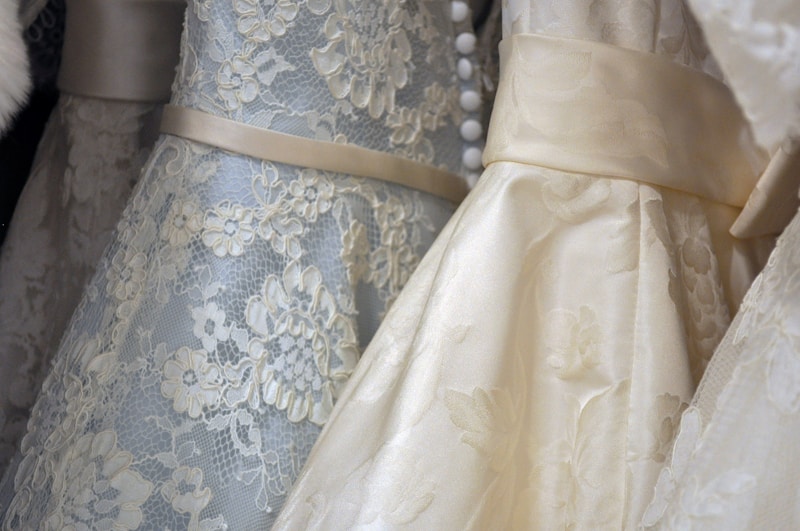Symbolism in Bridal Attire: Unveiling the Deep Meanings Behind Wedding Fashion
Symbolism in Bridal Attire: Unveiling the Deep Meanings Behind Wedding Fashion
Understanding the Symbolism in Bridal Attire
Bridal attire has been a focal point of weddings for centuries. Beyond mere aesthetics, every piece of clothing carries deep-seated meanings and cultural significance. In this article, we explore the symbolism in bridal attire, examining how different elements of wedding fashion reflect history, culture, and personal values, ultimately weaving a tapestry of significance into the fabric of love.
The Historical Context of Bridal Attire
The history of bridal attire is rich and diverse. Traditionally, the color white symbolizes purity and innocence, a notion popularized by Queen Victoria in the 19th century. However, in various cultures, different colors carry unique meanings. For example, in many Asian cultures, red symbolizes happiness and prosperity, making it a popular choice for brides. Understanding these historical contexts enhances our appreciation of symbolism in bridal attire.
Color Symbolism in Bridal Attire
| Color | Symbolism |
| White | Purity, innocence |
| Red | Happiness, prosperity |
| Blue | Loyalty, trust |
| Green | Growth, fertility |
| Purple | Luxury, power |
As observed in the table, each color chosen for bridal attire can evoke different emotions and convey essential messages about the bride and her aspirations for her married life. Choosing the correct color not only enhances the overall aesthetic but also intertwines cultural significance with individual identity.
Styles and Cuts: More than Just Fashion
The style and cut of bridal attire also serve as a means of communication, reflecting personal and cultural narratives. For instance, a ball gown style might signify a fairytale wedding dream, while a simple sheath dress could reflect a modern and minimalist worldview. Whether it be an A-line dress, a mermaid style, or a traditional kimono, each silhouette carries with it a story of how societal norms and personal preferences shape the big day.
Accessories and Their Symbolism
Accessories play a crucial role in completing bridal attire and adding layers of meaning. From veils to tiaras, each piece often denotes a symbol of status, tradition, or sentimentality.

For instance, a veil can symbolize modesty and respect, while a tiara often denotes royalty or sophistication. Even the choice of jewelry can reflect family heritage or be a sign of commitment, depending on whether the pieces have been handed down through generations or are newly acquired.
Cultural Variations in Bridal Attire
Bridal attire varies significantly across cultures and geographies, each telling a unique story about its society. For example, in India, the traditional bridal saree is often heavily embellished and vibrant, indicative of prosperity and beauty. Alternatively, a Western wedding typically features a white dress with a train, reflecting heritage and romantic ideals. Exploring these cultural variations provides deeper insights into the symbolism in bridal attire, emphasizing that every detail, from fabric to fit, is deeply woven into the bride’s narrative.
Modern Trends: Blending Old with New
Modern brides are increasingly opting for unique combinations of traditional and contemporary elements in their attire. This blend reflects personal expression and evolving cultural identities. For example, some brides may choose to wear a classic white gown paired with colorful accessories, or alternatively, don traditional attire infused with contemporary designs, highlighting both personal and cultural significance.
Emotional Symbolism in Bridal Attire
Beyond their cultural meanings, bridal attires often carry deep emotional significance. The dress may evoke memories of special moments such as the engagement, traditions passed down through generations, or the bride's aspirations for her new life. This emotional layer of symbolism in bridal attire not only enhances the aesthetics of the attire but also serves to highlight the bride’s journey to this significant day.
Considerations for Choosing Bridal Attire
When selecting bridal attire, brides must consider several factors to ensure the attire resonates with their personal identity and cultural values. Here are some essential considerations:
- Personal Significance: Choose elements that reflect your values and personality.
- Cultural Heritage: Embrace cultural traditions that matter to you and your family.
- Comfort: Ensure that your bridal attire allows you to enjoy your special day without physical discomfort.
- Fashion Trends: Stay informed about current trends but prioritize what truly resonates with you.
The Future of Bridal Attire
The future of bridal attire is leaning towards even more personalized options, where brides openly express their identities through unique styles and colors. Eco-friendly and sustainable options are gaining traction, promoting a message of love that transcends materialism. The symbolism behind bridal attire will likely continue to evolve as society changes, merging tradition with contemporary values.
Conclusion
In summary, the symbolism in bridal attire is a fascinating blend of history, culture, and personal narrative. From colors to styles, every detail reflects deep meanings that couples cherish. Understanding this symbolism not only enriches the wedding experience but also enhances the appreciation for the traditions and values shared between partners. As you prepare for your wedding day, remember that your bridal attire is not just a dress; it's a celebration of your journey, identity, and the future you envision together.
When planning your wedding attire, take the time to explore the rich tapestry of meanings and symbolism that each element embodies. Whether embracing traditional aesthetics or venturing into modern expressions, your bridal attire will forever hold a special place in your heart as a symbol of love and commitment.
